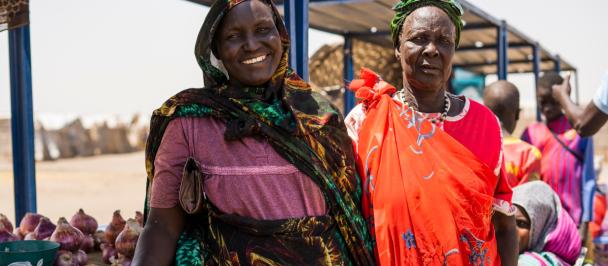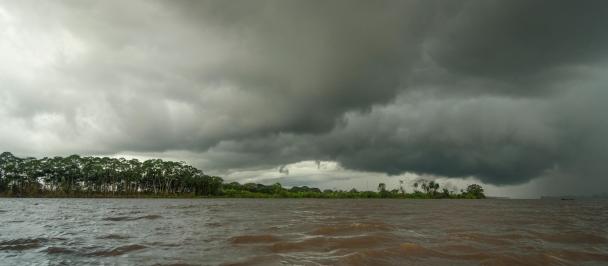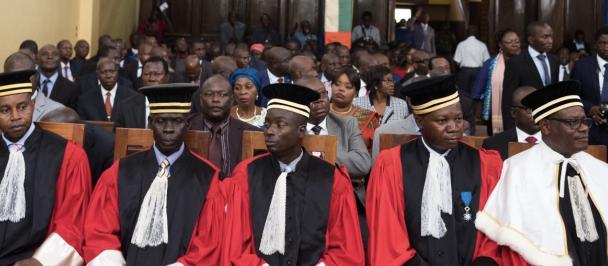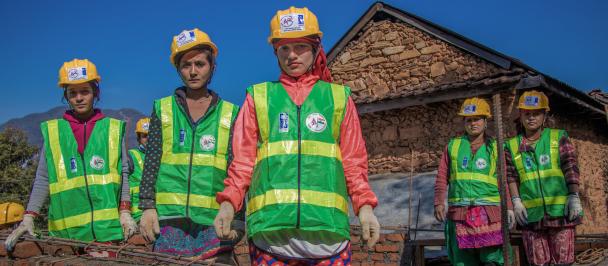Opening Ceremony of the Fourth World Reconstruction Conference, Geneva
Leave no one behind - making inclusion a reality
May 13, 2019
Excellencies, Distinguished Guests,
Ladies and Gentlemen,
On behalf of UNDP, I join my partners in welcoming you to this Conference, jointly organized with the European Union and the World Bank and in collaboration with UNDRR.
As we begin the Conference, let us commemorate the people in Mozambique, Malawi and Zimbabwe who have suffered major losses due to Cyclones Idai and Kenneth, and more recently also communities in India and Bangladesh which were hit by Cyclone Fani. We also express our sympathies for the flood ravaged communities in Iran.
These catastrophic events are the reason why we are gathered here today - to ensure that we support recovery processes that are inclusive and participatory and that help countries and communities lead on the rebuilding efforts to achieve their visions of resilient and sustainable development in line with the 2030 Agenda, and the Sendai Framework.
Disasters affect on average 218 million people each year. As the scale and impact of disasters are increasing, so does the need for recovery. Over the past decade, national governments have made great advances. We are seeing improved recovery assessments, a greater diversity of interventions, increased financial support, and better integration of disaster risk reduction in recovery. However, what we still need to improve is social inclusion in recovery.
We have long known that some groups, such as women, are exposed to higher risks in the event of a disaster than men. Also, persons with disabilities are disproportionately exposed to risks. Studies show that in disasters, the mortality rate of persons with disabilities is 2 to 4 times greater than for other members of communities. Especially in developing contexts, disability is highly gendered with 3 out of 5 persons with disabilities being women or girls. To address the needs of people with disabilities, UNDP has drafted a guidance note on “Disability Inclusive Development” and committed to using 10% of our programme funds to address the needs of people with disabilities.
There is also increasing evidence that the rising inequalities between the rich and the poor results in a much greater impact on low-income households. This is what the PDNA in Nepal showed us, when 750,000 people went below the poverty line because of the earthquake.
So, what can be done to address this? - With a better understanding of the risks faced by certain demographic groups, comes an understanding that gender-sensitive and inclusive practices are essential to reduce inequality and disaster risk, and improve the quality of recovery.
The Human Impact Assessment following disasters contributes to this understanding. The Assessment is facilitated by UNDP - as part of the PDNA approach and with inputs from other UN agencies - to learn more about the impacts on people with disabilities, women and other vulnerable groups. The Human Impact Assessment conducted in Mozambique in response to Cyclone Idai, for example, revealed that 111,000 girls, boys, women and men with disabilities were affected and 2,000 persons with disabilities left homeless. When we plan for recovery in Mozambique, we will take these impacts into consideration.
Ladies and Gentlemen, UNDP, the World Bank Group and the European Union together with UNDRR invite your active contribution to the discussions that will take place during the next two days, allowing policy makers and practitioners to take stock of progress, address challenges and highlight the opportunities to strengthen our engagements towards achieving more inclusive and resilient recovery in commitment to the Sendai framework and the SDGs.
Together, we can ensure we Leave No One Behind. Together, we can make recovery more resilient, and foster risk-informed and inclusive development.
Thank you.

 Locations
Locations



